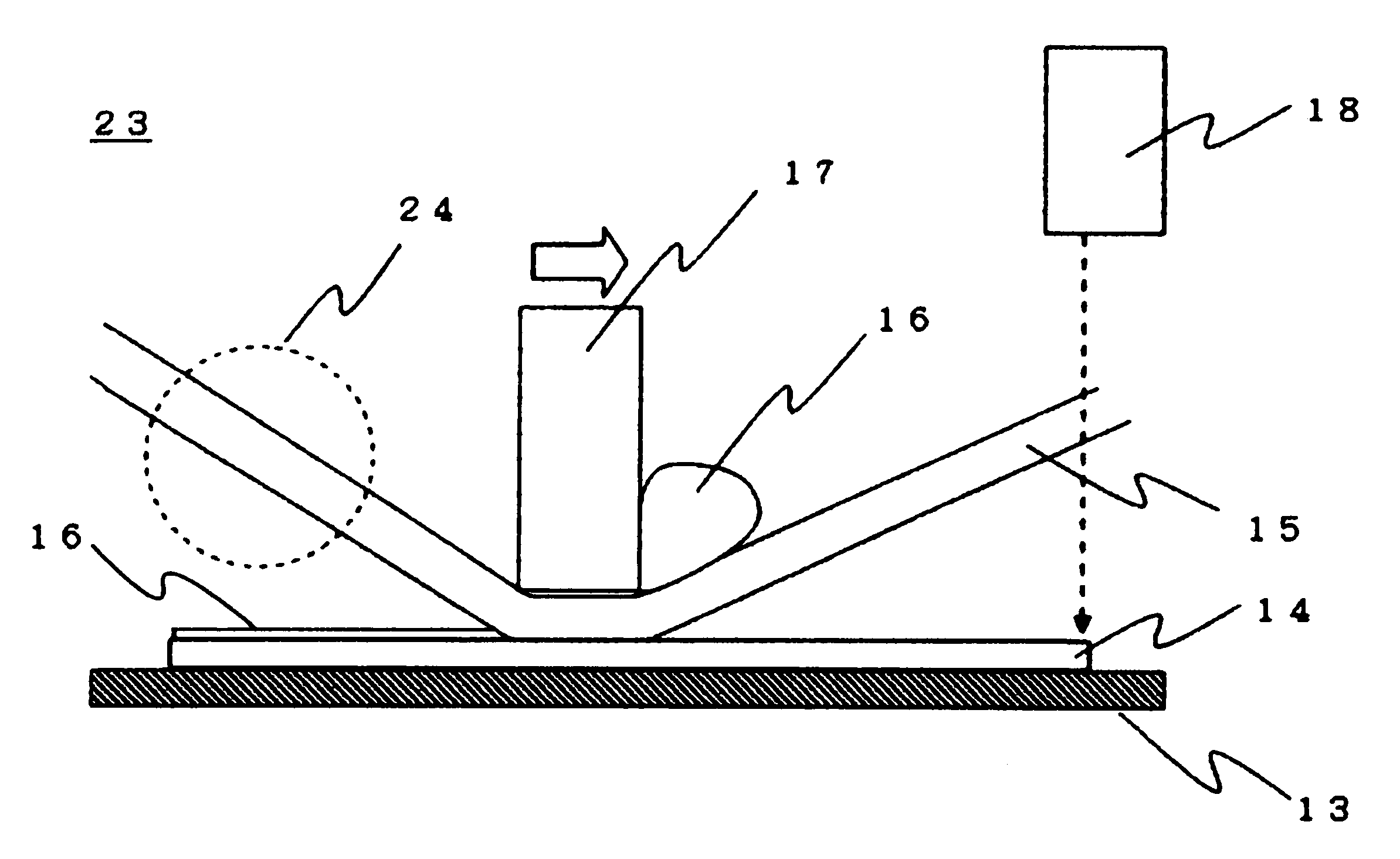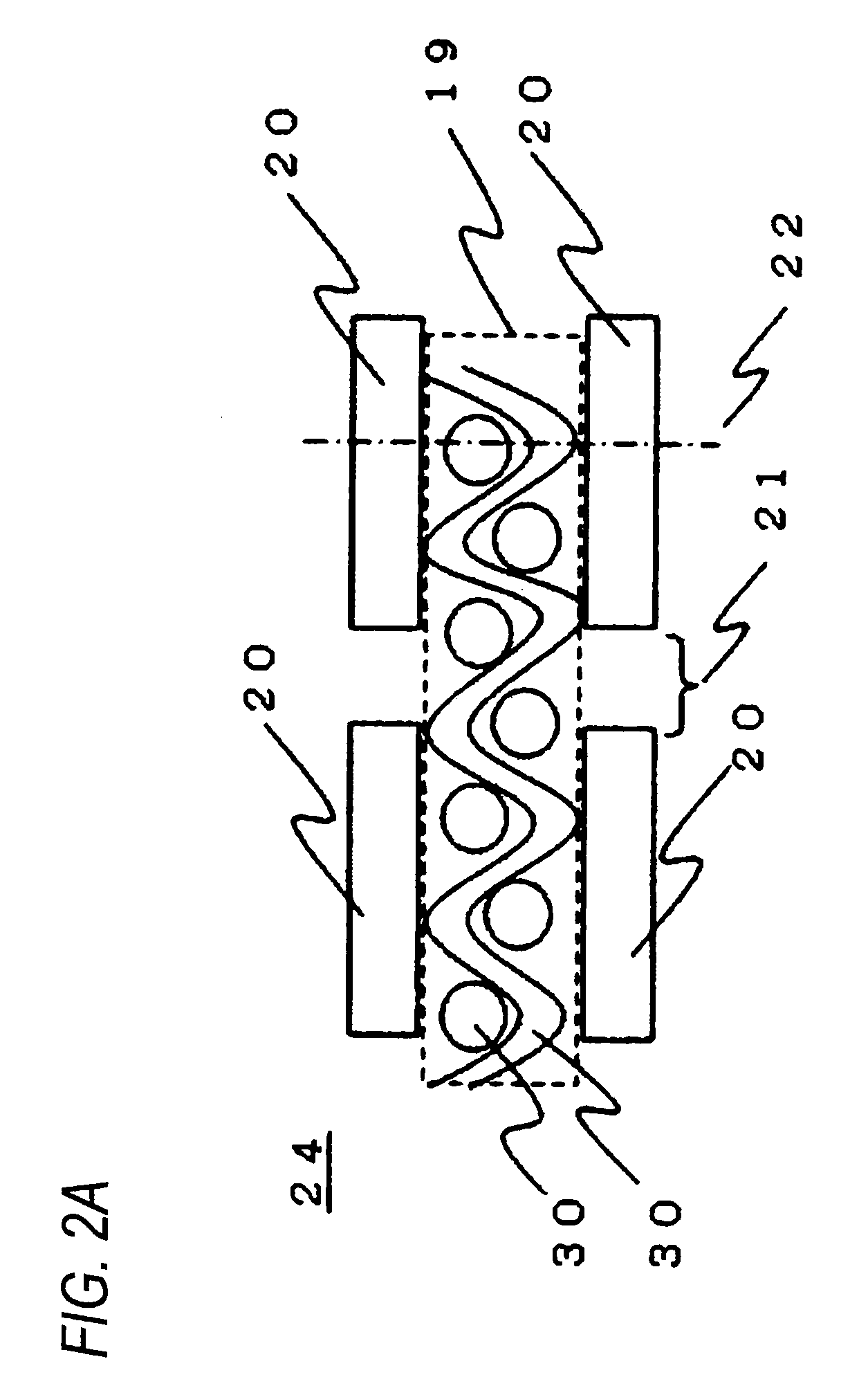Method of manufacturing liquid crystal panel
- Summary
- Abstract
- Description
- Claims
- Application Information
AI Technical Summary
Benefits of technology
Problems solved by technology
Method used
Image
Examples
embodiment 1
[0024]Hereinafter, embodiment 1 of the invention will be described with reference to the accompanying drawing. First, as shown in FIG. 1, a seal printer 23 is necessary to seal-print of a circumferential seal on a glass substrate by using a seal plate 15. The seal printer 23 includes a seal print stage 13, a seal plate 15, a seal squeegee 17, and an alignment camera 18.
[0025]In order to seal-print a sealant 16 on the glass substrate (in this embodiment, CF substrate 14), the CF substrate 14 where alignment marks (not illustrated) are printed is put on the seal print stage 13, and the camera 18 having an alignment function is provided. A seal printing position is controlled by performing a position control between the seal plate 15 having an outline section where alignment marks (not illustrated) are provided and the CF substrate 14. The sealant 16 is put on the seal plate 15, and then the seal squeegee 17 is pressing and sliding on the seal plate 15 in a direction along with an arro...
embodiment 2
[0033]FIG. 5 is a schematic view showing the occurrence positions of the mesh marks 12 in the case of seal printing using the seal plate according to embodiment 2 of the invention. As shown in FIG. 5, the center of meshes 31 of the vertical and horizontal fibers is disposed in parallel (zero degree) to the arrangement of the CF pixels (CF opening section 10) so that the cross-point sections 22 correspond to the cross-point sections of the BM region 11 of the CF substrate 14. In this case, it is sufficient to set such that the line pitch of the mesh fiber 30 becomes n times (where, n is a positive integer) that is equal to the arrangement pitch of the CF pixels (CF opening section 10). In this embodiment, since the mesh marks are arranged in the cross section of the BM region 11 having a wide area, there is a tolerance to an alignment deviation of up and down direction, right and left direction.
embodiment 3
[0034]In the embodiment 1 and embodiment 2 as described above, the mesh screen plate including the plain weaved stainless wires is used as the seal plate. In this embodiment, a screen plate adopting called as alpha meshes is used. As is well known, the alpha meshes are a flat screen plate formed by precipitation-forming Ni in an additive method (electroforming method).
[0035]Due to the alpha meshes, this screen plate has a superior dimensional stability, and the mesh pitches can be set somewhat freely. Accordingly, even with fine mesh pitches of 250 and 400 mesh / inch, a high dimensional accuracy can be accomplished. In this embodiment of the invention, this screen plate is used as the seal plate of a liquid crystal panel (in which the dot pitch becomes 249 pixels / inch) having a width across corner of 16 inches and a high resolution of QUXGA (3200 (in width)×2400 (in length) pixels). In this embodiment, in the same manner as in the embodiment 2, an advantageous arrangement against the...
PUM
 Login to View More
Login to View More Abstract
Description
Claims
Application Information
 Login to View More
Login to View More - R&D
- Intellectual Property
- Life Sciences
- Materials
- Tech Scout
- Unparalleled Data Quality
- Higher Quality Content
- 60% Fewer Hallucinations
Browse by: Latest US Patents, China's latest patents, Technical Efficacy Thesaurus, Application Domain, Technology Topic, Popular Technical Reports.
© 2025 PatSnap. All rights reserved.Legal|Privacy policy|Modern Slavery Act Transparency Statement|Sitemap|About US| Contact US: help@patsnap.com



